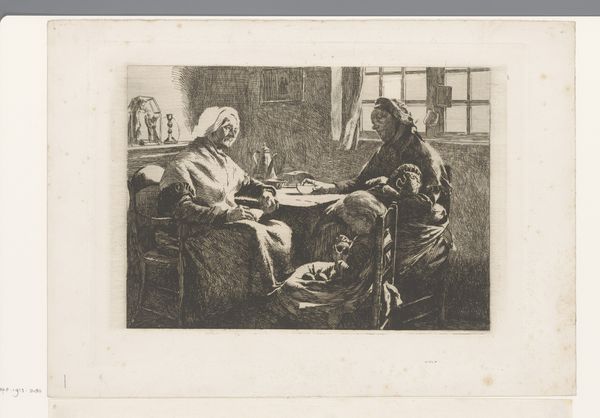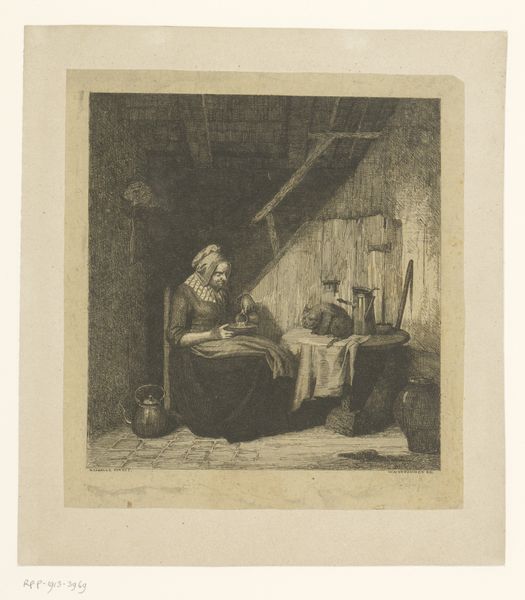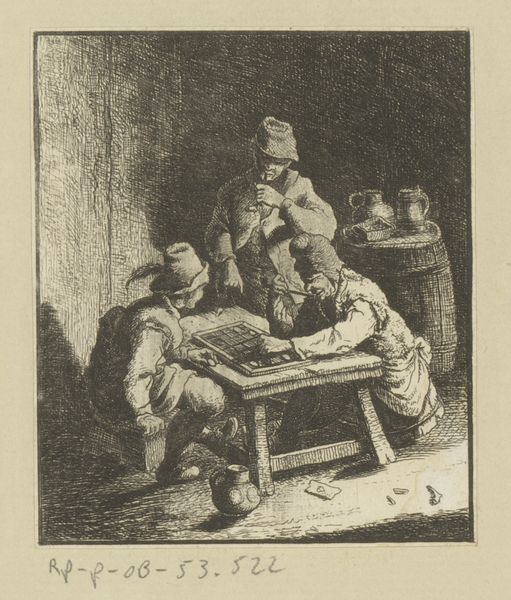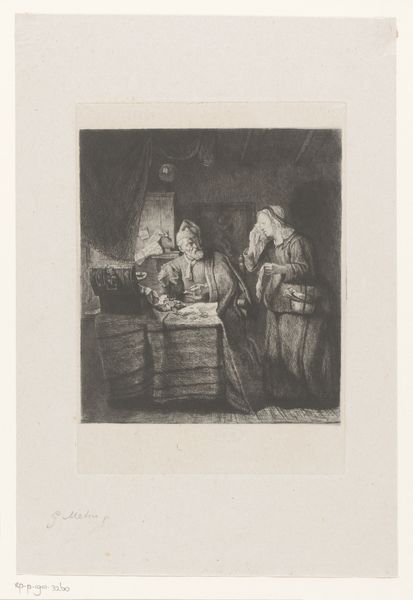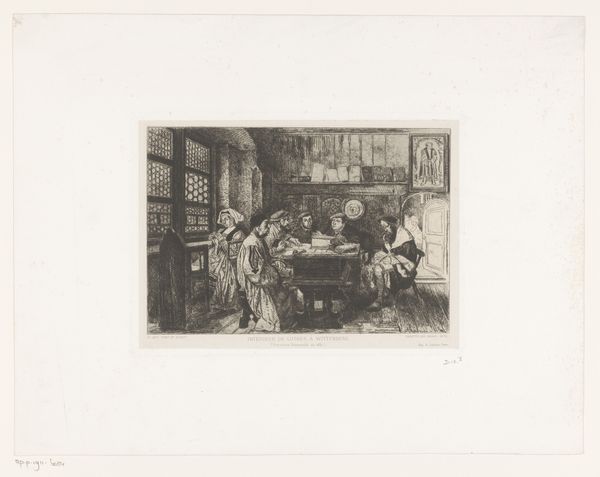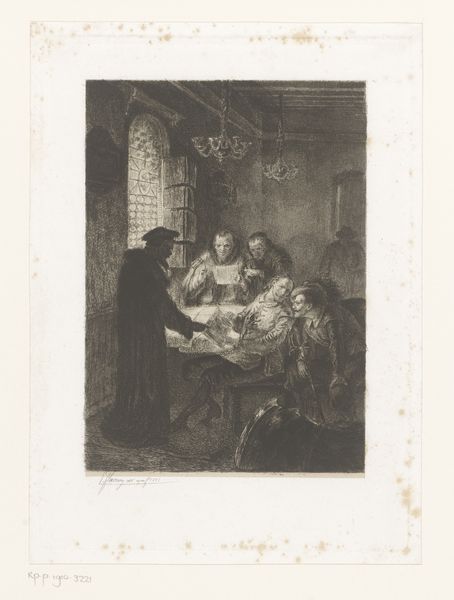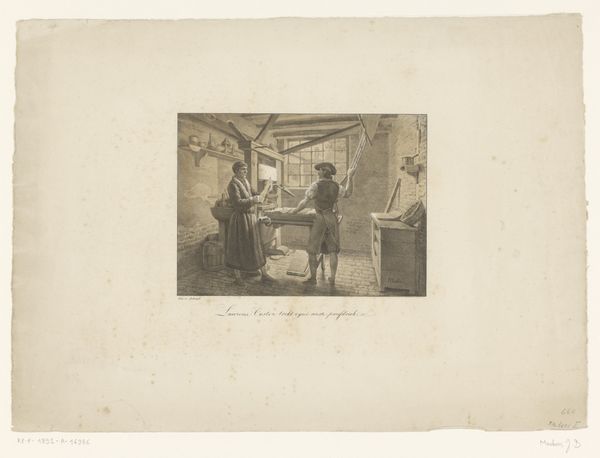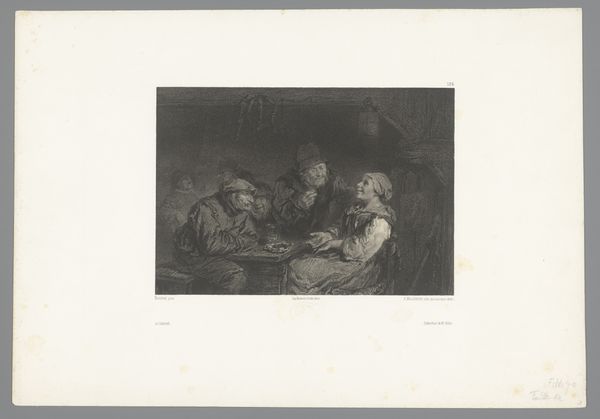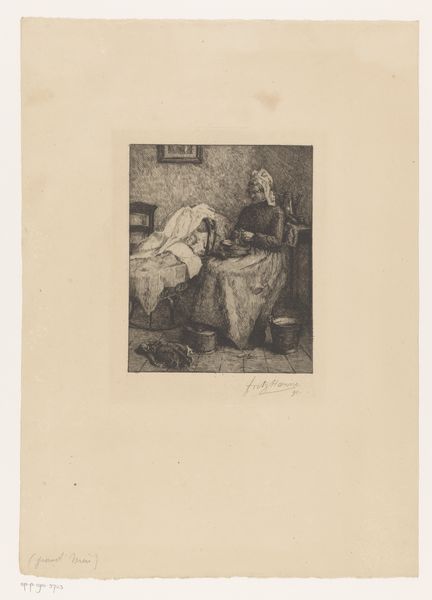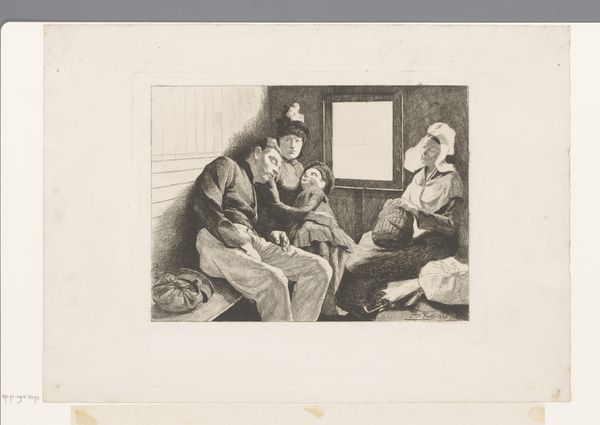
drawing, print, etching, paper, ink
#
portrait
#
photo of handprinted image
#
drawing
#
aged paper
#
photo restoration
#
ink paper printed
# print
#
etching
#
paper
#
ink
#
genre-painting
#
realism
Dimensions: height 235 mm, width 318 mm
Copyright: Rijks Museum: Open Domain
Editor: Here we have "Moeder met twee kinderen op bezoek bij grootmoeder," or "Mother with Two Children Visiting Grandmother" by Frans Proost, dating between 1885 and 1913. It's an etching printed in ink on paper. It feels intimate, with a close-knit domestic scene. How do you interpret this work, considering its focus on women across generations? Curator: The image indeed depicts intimacy but it also offers a window into the social constraints and power dynamics of the late 19th century. Think about the expectations placed on women during this era. Motherhood was often the defining aspect of a woman’s identity, and this work subtly highlights the cyclical nature of domestic roles being passed down. Do you see any clues that hint at the economic circumstances of the figures portrayed? Editor: I hadn't thought about that. Their clothing looks simple and practical, not elaborate, and the room seems sparsely furnished. Does that suggest a working-class background? Curator: Exactly. And the grandmother figure, she embodies a lifetime of labor and resilience, while the mother, likely constrained by similar expectations, finds support and continuation of generational experiences within the older woman's home. What do you observe about the body language? Editor: The grandmother and mother seem to share a close connection. The etching technique with its focus on line work also gives the image a timeless, documentary quality, making it relatable across different backgrounds. Curator: Yes, and that documentary feel opens up space for discussions about the complex layers of female experiences – caregiving, the division of labour, the passage of knowledge – and allows for more nuanced intersectional approaches. The art challenges us to reflect on these long standing issues and how we address it. Editor: I see what you mean. Thank you for offering this unique insight into Frans Proost's work. It prompts an essential reflection on social norms and lived realities that is valuable.
Comments
No comments
Be the first to comment and join the conversation on the ultimate creative platform.
